10 Nights / 11 Days

On arrival at New Jalpaiguri Railway Station (NJP) / Bagdogra Airport (IXB) / Tenzing Norgay Bus Terminus (Junction) / Siliguri – Guest will be received by our executive who will be waiting just outside of the airport or railway station – He will assist guest to board the vehicle to proceed for Phuentsholling – The drive is of 165 kilometers i.e. 4 to 4 ½ hour’s drive through the lush green Tea Estate of Duars - On arrival at Phuentsholing – Check into hotel - The border of India & Bhutan, the Indian side is known as Jaigaon and the Bhutan part is called Phuentsholing - Situated at an altitude of nearly 980 feet is a small settlement On arrival at phuentsholing check into the hotel and go to nearby immigration office for obtaining permits – Overnight: At Phuentsholing
The drive is 172 kilometers and is 6 ½ - 7 hours drive – Early morning breakfast - Proceed for Thimpu – The drive is beautiful, and one can see some waterfalls along the way – Thimpu is a charming city, probably the smallest capital in the world, resting in the heart of the Himalayas - The skyline hardly changes as new buildings are all constructed in traditional Bhutanese style - It is situated in the western central part of Bhutan – It is a lively place, interesting combination of tradition and modernity - Thimpu is situated at an elevation of 2350 meters / 7710 feet - Reach Thimpu - Check into the hotel and later in the evening visit National Memorial Chorten: This monument was built in 1974 in the memory of the late King Jigme Dorji Wangchuck. It was originally the idea of Bhutan’s third king, H.M. Jigme Dorji Wangchuck to erect a monument for world peace and prosperity, but could not be done due to his untimely death. So after his death, it was built to in his memory and to serve as a monument for world peace. and if time permits scroll the town - Overnight: At Thimphu
Early morning breakfast - Visit to Buddha Dordenma Statue/ Buddha point: This massive statue of Shakyamuni measures in at a height of 51.5 meters, making it one of the largest statues of Buddha in the world. The statue is made of bronze and is gilded in gold. 125,000 smaller Buddha statues have been placed within the Buddha Dordenma statue, 100,000 8 inch tall and 25,000 12 inch tall statues respectively. Each of these thousands of Buddhas have also been cast in bronze and gilded. The throne that the Buddha Dordenma sits upon is a large meditation hall. , the tallest Buddha statue oking Thimphu valley, visit Changangkha Lhakhang: This temple is one of the oldest in the Thimphu and was built in the 12th century by Nyima the son of Phajo Drugom, the founder of Drukpa school of Buddhism in Bhutan. The temple is highly revered by the Bhutanese especially because new born babies are normally brought here to seek blessings from the deity, Takin Preserve Centre: It is just located in Thimphu above Mothithang. The Takin is the national animal of Bhutan, and looks like a cross between a cow and a goat. Legend has it that the animal was created by the great Buddhist yogi, Drukpa Kuenley, and it can be found only in Bhutan and nearby areas. Taxonomists place the animal in a category of its own as it is not similar enough to any other animal to fit established categories, Folk Heritage Museum & the Textile Museum: These museums, both of which opened in 2001, provide fascinating insights into Bhutanese material culture and way of life and is a ‘must see’ when in Thimphu.he various skills taught at the school, - Toward the afternoon proceed to Phobjikha drive to Phobjikha through Dochula pass (3080 meters) that heralds the most enchanting views of Bhutan - Later drive to Punakha, Wangdue visit Punakha dzong built strategically at the junction of pho chu & mo chu river in 1963 - Evening visit some places in Phobjikha the fascinating valley – Overnight: At Phobjikha
Morning drive to process further across 3300 meters pelela pass enroute visit Chendbji Chorten and make some beautiful sightseeing in Trongsa, After arrival at Bumthang Check into the hotel and if you wish visit Chamkhar Town in Bumthang. Overnight at Bumthang.
After breakfast drive to visit the following places in Bumthang: Jambay Lhakhang : This monastery was built in the 7th century by Tibetan King, Songtsen Gampo. It is one of the 108 monasteries built by him to subdue evil spirits n the Himalayan region. Its present architectural appearance dates from the early 20th century. Kurje Lhakhang : Situated before Jambay Lhakhang, Kurje Lhakhang consists of three temples. The one on the right was built in 1652 on the rack face where Guru meditated in the 8th century. Second temple is built on the site of a cave containing a rock with the imprint of Guru's body and is therefore considered the most holy. The third temple was built in 1990s by Ashi Kesang, the Queen Mother. These three temples are surrounded by a 108 chorten wall. Tamshing Lhakhang: Located across the river from Kurje Lhakhang, this temple was founded in 1501 by Terton Pema Lingpa, the re-incarnation of Guru Padsambhava. The monastery has very ancient religious paintings like 1,000 Buddhas and 21 Taras (female form of Buddhistava). The temple was restored at the end of the 19th century.
Jakar Dzong : Founded by great grand-father of the first Shabdrung, the Dzong was initially built as a monastery in 1549. It was upgraded after the Shabdrung had firmly established his power in 1646. The Dzong is now used as administrative centre for Bumthang valley, and houses the regional monk body.
Konchogsum Lhakhang: It was built in the 6th century but was renovated in 1995, which accounts for its fresh look. It contained a large bell and it is said that when this bell was rung it could be heard all the way in Lhasa in Tibet. During the 17th century a Tibetan Army tried to steal this bell but was too heavy and they dropped it and cracked it. It is now displayed at the National Museum in Paro.
Chankhar Lhakhang : Beyond Jambay Lhakhang is Changkhar Lhakhang, the site of the palace of the Indian King Sindhu Raja. Because of its simplicity it looks like an ordinary village house. The original palace was built of iron and this is why it was named Chankhar, meaning iron castle. It was rebuilt in the 14th century by a Saint called- Dorji Lingpa. Lhodrak Kharchhu Monastery: Located above the main town, about 3 km from Chamkhar town, the monastery was founded by Namkhai Nyingpo Rinpoche in 1984 who was recognized at a very young age by H.H. the 14th Dalai Lama and H.H. 16th Karmapa as the reincarnation of a Tibetan lama whose spiritual lineage dates back to the nearest disciples of the great 9th century master. Since then the monastery has developed considerably with increase in number of monks to almost four hundred. The monastey has become part of an extensive effort to preserve and revitalize Tibetan culture. The monks regular curriculum include reading, memorizing the daily prayers, learning dharma dances, drawing mandalas, learning the melodies of sacred rituals, learning the use of ceremonial instruments and the art of making sacrificial objects, grammer, poerty, karika along with the basics of contemplation and instruction on the different stages of tantra.
Excursions around Bumthang or Jakar valley
Tangbi Goemba: A walk of half an hour north of Kurje Lhahang leads to this monastery, founded in 1470 by Shamar Rinpoche of the Kagyupa religious school. The temple has two sanctuaries and a temple of terrifying deities. The sanctuary on the ground floor contains statues of past, present and future Buddha and three clay statues probably dating end of the 15th century. On the upper floor, the vestibule contains two remarkable paintings of Guru Rinpoche's heaven and the Buddha Amitabh's heaven. Ngang Lhakhang: A few hours walk from the Tangbi Goemba is the small region of Ngang Yul (Swan Land) and this temple here is 100 m above the valley floor. The site was visited by Guru Rinpoche and present temple was built in the 15th century by Lama Namkha Samdup, a contemporary of Pema Lingpa. A three days festival is held here each winter with masked dances in honor of the founder of the temple. Ura Valley: Jakar to Ura is 48 km, about one and a half hour drive. To reach here, the road climbs toJakar valley Bhutan amazingly open countryside, only occasionally running into forest. Large sheep pastures line the road up to 20 km behind the southern tip of the Tang valley. The route crosses Ura la pass (3,600m) with a magnificent view of Mount. Gangkhar Puensum. Villages in Ura have clustered houses, which is quite unusual in Bhutan. Above Ura village (3,100m) is a new temple dedicated to Guru Rinpoche. Inaugurated in 1986, it contains a huge statue of the master and remarkable paintings of the cycle of his teachings. Since last 25 years Ura has been transformed from a marginal community to prosperous valley. Membartsho (The Burning Lake) in Tang valley is a wide spot on the Tang Chhu (chhu - water / river) and is considered to be one of the greatest pilgrimage sites of Bhutan. Pema Linga found several of Guru Rinpoche's hidden treasures here. The importance of this site is indicated by the extensive array of prayer flags and the small clay offerings called 'Tse Tsa' in rock niches. Ugyenchholing Palace in Tang valley is another attraction. Restored in 19th century, it is now housing the Family Museum, a place that will transport visitors to another world and time. The visitors will view permanent exhibits recreated to capture the ambience of the lifestyle of the Trongsa Penelop (Governor) Tshokey Dorji and his household. It also serves as retreat for those engaged in religious history. Bhutan's history truly unfolds here. If time permits visit other places too. Over night at Bumthang
Morning after breakfast drives back to Punakha across the Yutongla pass (3400). On arrival at Punakha if time permits visit Punakha Dzong: is the second oldest dzong in Bhutan and was built in 1637. It is strategically located at the junction of the Pho Chu (Male River) and Mo Chu River (Female River). The dzong is still the winter residence for the central monk body and every year His Holiness the Je Khenpo and the central monastic body move to Punakha in winter and Thimphu in summer. The dzong houses some very sacred religious objects such as the “Ranjung Kharsapani” which is considered one of the most sacred relics in Bhutan. It was brought to Bhutan by Zhabdrung and caused many invasions by the Tibetans in olden times. The dzong also has the embalmed body of Zhabdrung preserved in the Machen Lhakhang and is closed to all people except His Majesty and His holiness the Je Khenpo. There is also a set of 108 volumes of the Kanjur (words of Lord Buddha) written fully in gold. Historically, this dzong is important because it is the place from where monarchy started in Bhutan. The first king was coronated in this dzong. In the evening if time permits visit some farm house. Overnight at Punakha
After breakfast visit the following places in Punakha: Khamsum Yulley Namgyel Chorten: This Chorten (stupa) lies to the west of the Mo chu river and is perched high on a strategic ridge 7 kms from Punakha. This Chorten is unique and the only one of its kind in the world. It is an splendid example of Bhutan’s fine architecture and artistic tradition. Her Majesty the Queen (Mother of the present king) was the patron of this monument. This stupa was built to help remove negative forces and promote peace, stability and harmony in the world and for the well being of our king and the people. Chimi Lhakhang: known to the English speaking world as The Fertility Temple, is a Buddhist monastery, in the Punakha District of Bhutan, idyllically placed on a rotund hill. The temple was built over half a century ago by Ngawang Choegyel, the 14th Drukpa hierarch. The stupa, meditation hall, was constructed by the “Divine Madman,” the eccentric Yogi and saint Drukpa Kunley, who blessed the entire grounds. The monastery is renowned throughout Bhutan as a fertility inducing magnet, pledging that all who wish to conceive will find guidance at the temple. Thousands pilgrimage to The Fertility Temple in the hopes of having a child, as well as receiving a wang, blessing, from the saint with the ‘magic thunderbolt of wisdom.’ Couples with new-borns often visit the temple so that a local lama, Buddhist teacher, can bestow a resounding forename on the child, whilst eager travellers can approach lamas for their unique Bhutanese name and especial meaning. Myth and folklore cloak Chimi Lhakhang and its maverick saint, Drukpa Kunley. He preached Buddhism is an unconventional manner, by way of song, comedy, and shocking sensual connotations. Legend has it that the Yogi buried a dog-like demoness under rotund earth, shaped in the female form, that now stands under the Stupa floor. He actively encouraged phallus symbols to be used throughout the design of the temple in paintings and carvings. To this day, the monastery safeguards the original wooden phallus symbol, imbedded with a silver handle, from Tibet, that is used to bless visitors and pilgrims. Talo village. The beautiful village of Talo (alt. 2,800m) which is scattered along the hill slopes, known for its cleanliness and hygiene among Punakha villages. The beautiful farm houses of the village have its own flower gardens and on the hill slope corns and sweet peas are grown in abundance. Also visit Talo Sangnacholing, built on a plateau and has majestic view of surrounding villages. Overnight at Punakha
Built in 1627, it is the oldest Dzong in the country. The most noteworthy artistic feature of this dzong is the series of over 300 finely worked slate carvings behind the prayer wheels in the courtyard which are centuries old. The paintings inside this dzong are believed to be some of the oldest and the most beautiful in the country. On arrival at paro visit the following place: Rinpung Dzong: or “the fortress of the heap of jewels” was built in 1646 by Shabdrung Ngawang Namgyal to defend the Paro valley from Tibetan invasion and presently it serves as central monastic and administrative seat of the district of Paro. It is one of Bhutan’s most impressive and finest examples of Bhutanese architecture. It is different for other Dzongs in Bhutan as it is in a square and the “utse” (central tower) is surrounded by the outer structure. The dzong houses one of the most sacred “Thongdrol” (meaning religious banner) about 20 sq. metres and is displayed only once a year during the Paro Tshechu (annual festival). The third king of Bhutan was crowned in this dzong. Nya-mey Zam: or “the bridge with no fish” is the bridge that connects Paro town to the dzong. It is one of the finest specimens inBhutan and locals believe that if one sees a fish in the river, it is an ill omen. The earlier bridge which could be folded during war was washed away by flood in 1969. Ta Dzong: Strategically located on a hill above the dzong and built in 1649 is the Ta Dzong. “Ta”means to see/watch and “dzong” means fortress. This monument served as a watch tower to the Paro Dzong. There is said to be an underground tunnel that leads to the water supply below. The structure was converted to the National Musuem in 1968. Ta Dzong holds a fascinating collection of art, relics, religious thangkha paintings, exquisite postage stamps, coins and handicrafts and a small natural history collection. Dungtse Lhankhang: This temple was built by a famous Tibetan saint popularly known as Changzampa or the iron bridge builder in 1421. It is the only temple of this kind in Bhutan. It is in the form of a stupa and it contains some of the rarest and unique frescoes paintings in the region. The paintings are unique also because they depict the progressive stages of tantric Buddhist philosophy as well as the most important deities and figures of Drukpa Kagyu School of Buddhism. In the evening scroll Paro town and visit some handicraft shop. Overnight at Paro
or “Tiger’s Nest” is one of the most famous places to visit in Bhutan and one of the holiest sites in Bhutan. It is perched on a steep granite cliff at 2950 metres overlooking northern paro valley. The place is especially venerated because of its association with Guru Rimpoche and is believed that more merit is gained if we meditate even for a minute in Tasktshang than many months in other places. The main temple was built in 1692 and the temple was badly damaged by fire several times with the most recent one being in 1998. It takes almost 4 hrs round journey by foot. Lunch in the Captriea and visit the following places in the afternoon: Drukgyel Dzong: “fortress of the victorious Drukpas” was built in 1649 to celebrate Bhutanese victory over the Tibetan invasions . What stands a mere tourist spot today was once western Bhutan’s most strategic fort from which many Tibetan invasions were repulsed. Under the leadership of Zhabdrung, Bhutanese fought 12 battles with the Tibetans in different places with one being in this particular place. It was destroyed by fire in 1951, and the towering outer walls and central tower still remains an imposing sight. On a clear day, there is a splendid view of Mt. Chomolhari from the approach road to this place. Kyichu Lhakhang: Consists of twin temples and the older one is one of the 108 temples built by King Songtsen Gampo of Tibet in 659 AD. This temple is deeply venerated for its antiquity and the role it plays in BhutanHistory. The construction of this temple and Jampa Lhakhang in Bumthang marked Bhutan for the first time on Buddhist map. The temple contains one of the most sacred statues of the country – the jowo which is the image of Buddha at 8years and is similar to the one which is present in the Jokhang temple in the Potola Palace in Lhasa, Tibet. In the evening visit some farm house in Paro. Overnight at Paro
After breakfast proceed to Chalsa for your onwards journey. Enroute make some beautiful sightseeing. Overnight at Chalsa.
After breakfast transfer to Bagdora airport for your journey. End of Tour.
Bhutan is considered as a traveler’s paradise, especially for those who prefer to take a break in a lap of nature. It is home to lush green forests, waterfalls, and rivers. One can travel to any destination of gorgeous Bhutan with our help. We, at Phendey Tours & Treks, welcome you to explore the majestic locations to gather unforgettable moments. When you plan to travel with us, right from package booking to your safe arrival to your homeland, we take care of everything. Read More...
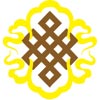
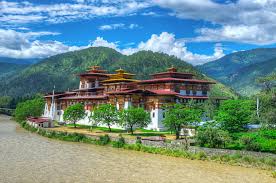 12D/11N
12D/11N
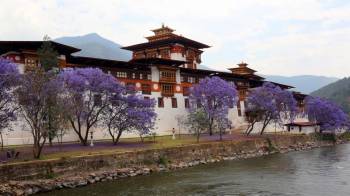 6D/5N
6D/5N
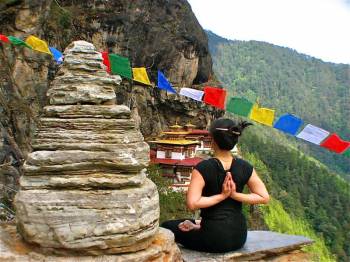 4D/3N
4D/3N
 12D/11N
12D/11N
Bhutan Private Tours - 11 Nights & 12 Days
Paro - Thimphu - Punakha - Trongsa - Bumthang
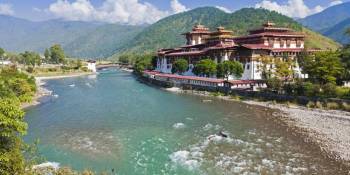 3D/2N
3D/2N
 11D/10N
11D/10N
 11D/10N
11D/10N
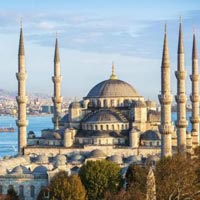 11D/10N
11D/10N
 11D/10N
11D/10N
Bhopal - Pachmarhi - Jabalpur - Gwalior - Chhatarpur - Tikamgarh - Umaria
 11D/10N
11D/10N
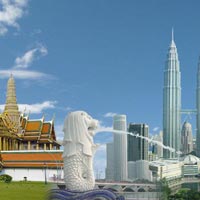 11D/10N
11D/10N
 11D/10N
11D/10N
 11D/10N
11D/10N
Best of Gujarat With Wildlife Tour
Ahmedabad - Bhavnagar - Diu - Junagadh - Rajkot - Bhuj - Jamnagar - Dwarka - Mumbai
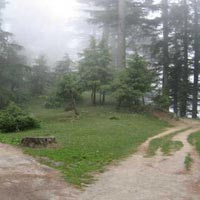 11D/10N
11D/10N
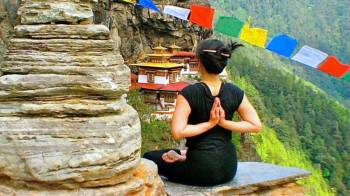 7D/6N
7D/6N
 15D/14N
15D/14N
Himalayan Odyssey 14 Nights - 15 Days Tour
Thimphu - Paro - Wangdue Phodrang - Punakha - Mongar - Bumthang - Trashigang
 8D/7N
8D/7N
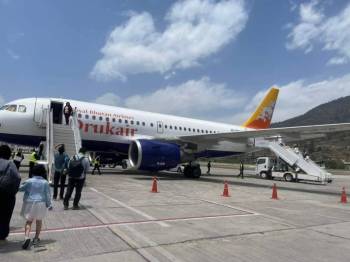 16D/15N
16D/15N
15 Nights/16 days Merak Sakteng Trekking..
Thimphu - Paro - Punakha - Bumthang - Trashigang
 10D/9N
10D/9N
Thimphu - Paro - Wangdue Phodrang - Punakha - Trongsa - Bumthang
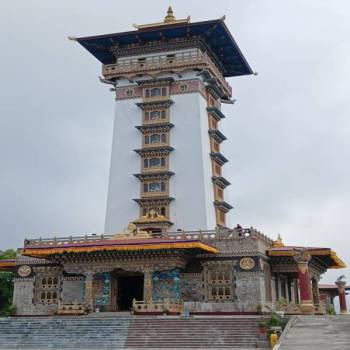 7D/6N
7D/6N
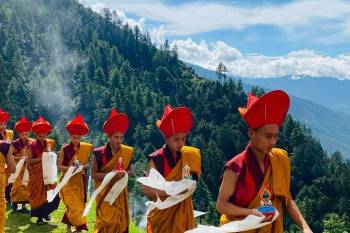 5D/4N
5D/4N
 7D/6N
7D/6N
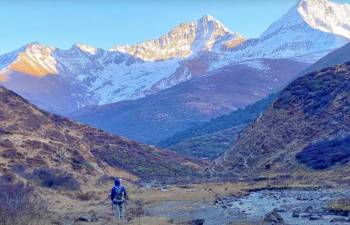 12D/11N
12D/11N